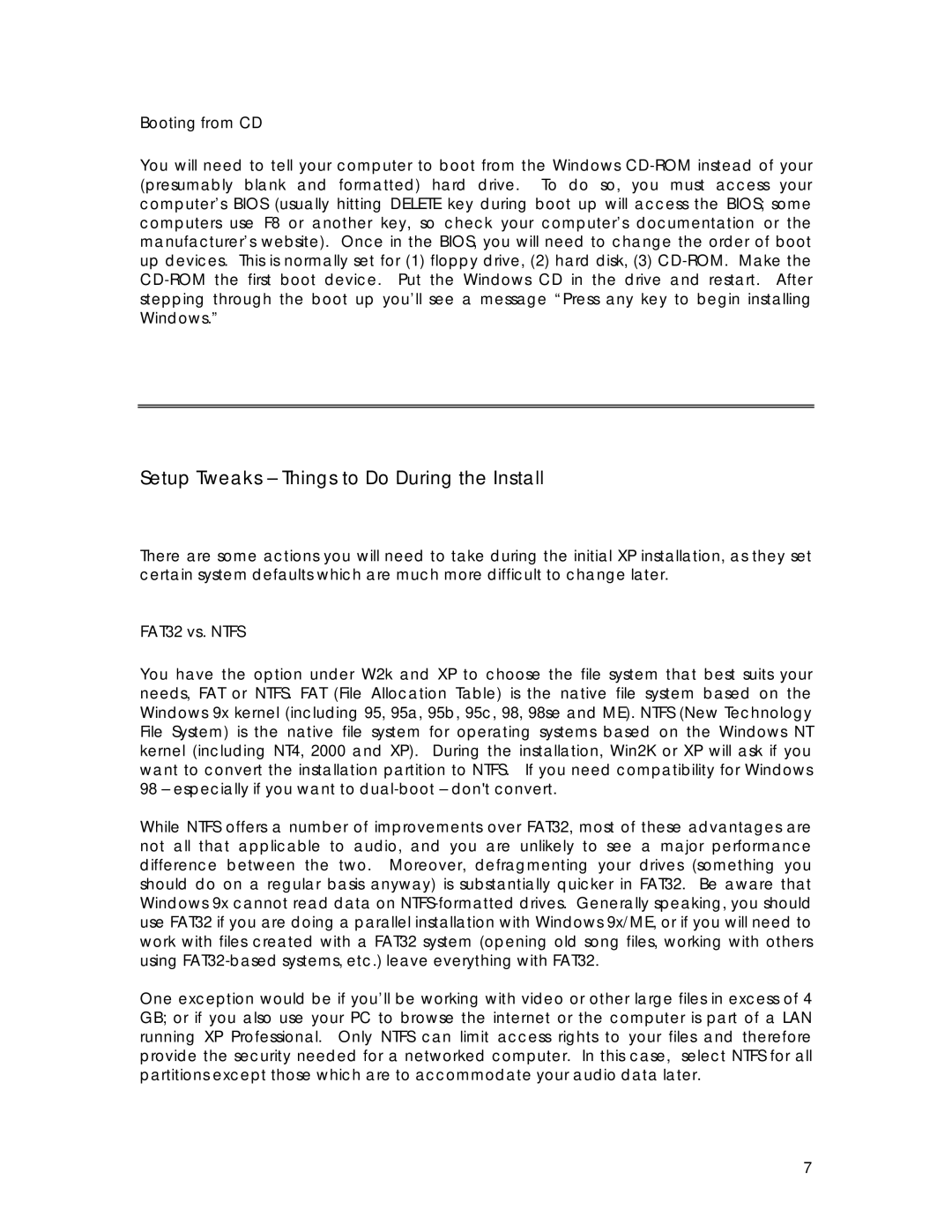Booting from CD
You will need to tell your computer to boot from the Windows
Setup Tweaks – Things to Do During the Install
There are some actions you will need to take during the initial XP installation, as they set certain system defaults which are much more difficult to change later.
FAT32 vs. NTFS
You have the option under W2k and XP to choose the file system that best suits your needs, FAT or NTFS. FAT (File Allocation Table) is the native file system based on the Windows 9x kernel (including 95, 95a, 95b, 95c, 98, 98se and ME). NTFS (New Technology File System) is the native file system for operating systems based on the Windows NT kernel (including NT4, 2000 and XP). During the installation, Win2K or XP will ask if you want to convert the installation partition to NTFS. If you need compatibility for Windows 98 – especially if you want to
While NTFS offers a number of improvements over FAT32, most of these advantages are not all that applicable to audio, and you are unlikely to see a major performance difference between the two. Moreover, defragmenting your drives (something you should do on a regular basis anyway) is substantially quicker in FAT32. Be aware that Windows 9x cannot read data on
One exception would be if you’ll be working with video or other large files in excess of 4 GB; or if you also use your PC to browse the internet or the computer is part of a LAN running XP Professional. Only NTFS can limit access rights to your files and therefore provide the security needed for a networked computer. In this case, select NTFS for all partitions except those which are to accommodate your audio data later.
7
